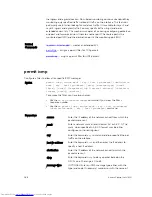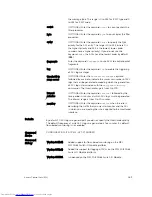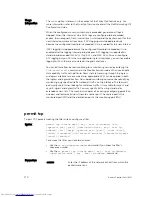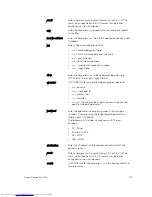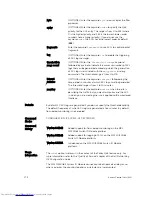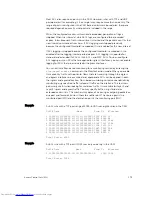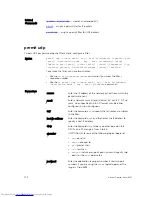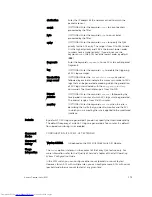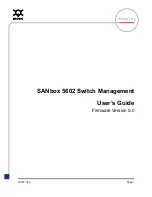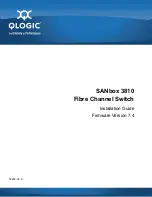
•
fin:
finish (no more data from the user)
•
psh:
push function
•
rst:
reset the connection
•
syn:
synchronize sequence numbers
•
urg:
urgent field
operator
(OPTIONAL) Enter one of the following logical operand:
•
eq
= equal to
•
neq
= not equal to
•
gt
= greater than
•
lt
= less than
•
range
= inclusive range of ports (you must specify two
ports for the
port
command)
port port
Enter the application layer port number. Enter two port
numbers if using the range logical operand. The range is
from 0 to 65535.
The following list includes some common TCP port
numbers:
• 23 = Telnet
• 20 and 21 = FTP
• 25 = SMTP
• 169 = SNMP
destination
Enter the IP address of the network or host to which the
packets are sent.
mask
Enter a network mask in /prefix format (/x) or A.B.C.D. The
mask, when specified in A.B.C.D format, may be either
contiguous or non-contiguous.
count
(OPTIONAL) Enter the keyword
count
to count packets the
filter processes.
byte
(OPTIONAL) Enter the keyword
byte
to count bytes the filter
processes.
order
(OPTIONAL) Enter the keyword
order
to specify the QoS
priority for the ACL entry. The range is from 0 to 254 (where
0 is the highest priority and 254 is the lowest; lower-order
numbers have a higher priority) If you did not use the
keyword
order
, the ACLs have the lowest order by default
(
255
).
fragments
Enter the keyword
fragments
to use ACLs to control packet
fragments.
log
(OPTIONAL) Enter the keyword
log
to enable the triggering
of ACL log messages.
160
Access Control Lists (ACL)























